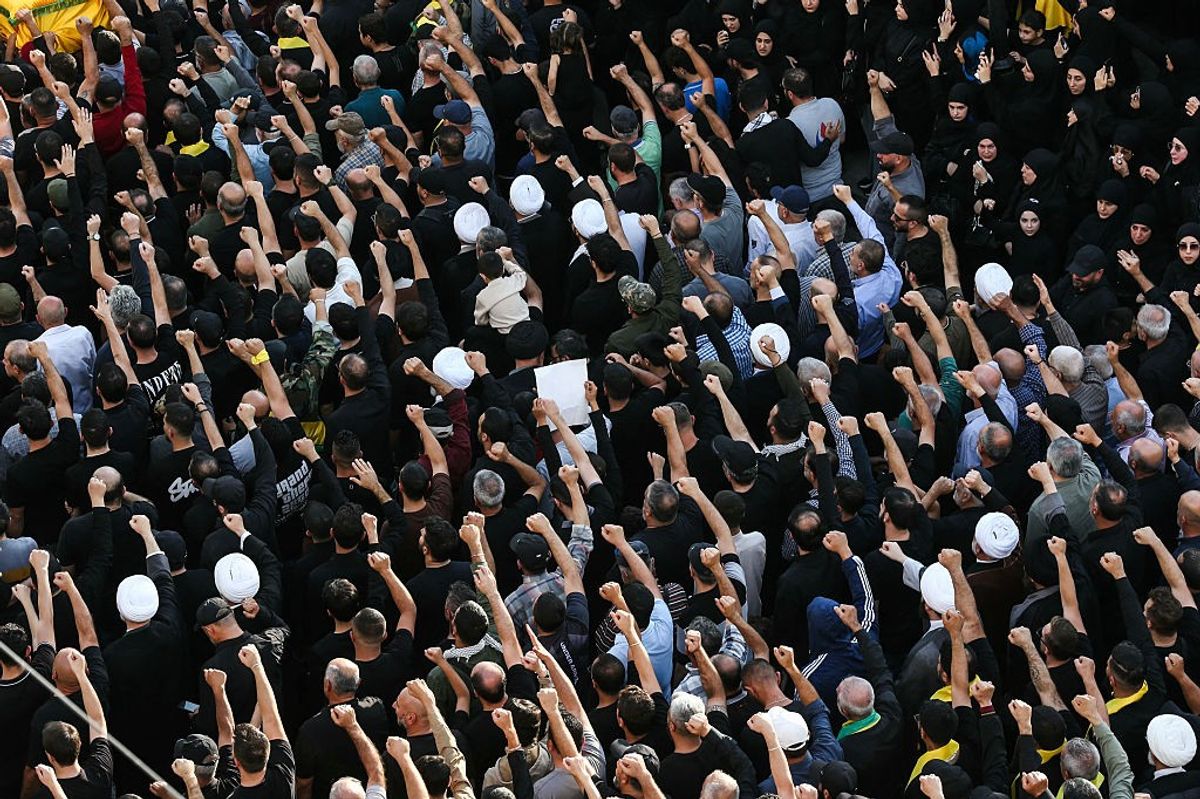SUBSCRIBER+ EXCLUSIVE REPORTING — While the public focus of Israeli Prime Minister Benjamin Netanyahu’s visit to Washington this week has been on his speech to Congress and his newly fraught relationship with many American politicians, one issue sure to come up when Netanyahu meets with President Joe Biden is Washington’s reluctance to supply Israel with certain heavy weapons.
In May the White House said it was implementing a “pause” on the shipment of 1,800 2,000-lb bombs and 1,700 500-lb bombs over concerns about Israel’s impending incursion into Rafah, in southern Gaza, and “the impact (the munitions) could have in dense urban settings as we have seen in other parts of Gaza.”
In a rare rebuke to Israel, the administration threatened to withhold other weapons over humanitarian concerns.
Word filtered out that among other things, Washington was reviewing the sale to Israel of 6,500 Joint Direct Attack Munition (JDAM) kits, which use GPS and other navigation technology to turn old-fashioned “dumb” bombs into precision-guided munitions.
Infuriated, Netanyahu released a video in June complaining about the “inconceivable” delays in American weapons shipments. On July 10, the White House lifted its “pause” on the 500-pound bombs, but said the 2,000-pound bombs would remain blocked. And to date the JDAM kits haven’t been cleared either.
The weapons issue reflects a growing divide over the war and U.S. policy towards Israel, divisions that have brought protests to university campuses and to Capitol Hill, where Netanyahu’s Wednesday appearance was greeted by demonstrators. On the one side are staunch supporters of Israel who argue that the U.S. must do everything possible to help its longtime ally respond to the terror of the October 7 Hamas attacks; on the other are those who say that Gaza – one of the most densely-populated territories on earth – is no place for such heavy munitions, and that the U.S. should withhold the shipments until Israel shows more care for civilian lives in Gaza.
What happened at Al-Mawasi
According to a U.S. Air Force fact sheet, a single 2,000-pound bomb “is capable of penetrating up to 11 feet of concrete and spreading lethal shrapnel in a 400-yard radius.” If those figures seem abstract, a recent airstrike in Gaza made the power of these heavy bombs abundantly clear.
On July 13, Israeli warplanes bombed Al-Mawasi, a designated safe zone for Palestinians fleeing the fighting in southern Gaza. The target was a compound where Israeli intelligence said that Mohammed Deif, Hamas’ military chief and an alleged mastermind of the October 7 attacks, was sheltering with another Hamas commander, Rafa Salama. In the aftermath, Salama was declared dead, but Deif’s fate was unclear; Hamas leaders denied he had been killed, while an Israeli Defense Forces spokesman said the IDF’s intelligence showed that the two Hamas leaders "were sitting next to each other at the time of the strike.”
What was not in dispute was the devastation caused by the bombing.
At least 90 Palestinians were reported killed and hundreds injured by the Israeli strike. CNN and Agence France-Presse (AFP) quoted munitions experts saying that the tail fin of a JDAM was visible in the wreckage. Trevor Ball, a former U.S. Army explosive ordnance disposal technician, told the AFP that images of the Al-Mawasi strike showed "it's 100 percent a JDAM kit." Ball added that the bomb itself probably carried a 1,000- or 2,000-pound payload, and might have been a BLU-109 "bunker buster", which is a 2,000-pound bomb designed to penetrate concrete.
Presumably the Israelis felt the mission to kill Deif warranted a heavy strike, and perhaps also the need to blast through to any underground bunker; others argued – as they had before – that a bomb that size has no place in a mission to take out one or two individuals in a crowded area.
According to a CNN report last December, a U.S. intelligence analysis assessed that during the first two months of the Israel-Hamas war, Israel dropped 29,000 air-to-ground munitions on Gaza, of which 40-45 percent were unguided “dumb bombs.” The report indicated that many of the bombs Israel used were probably drawn from its ample weapons inventory.
Meanwhile, the U.S. was backfilling that inventory with a surge of weapons shipments. According to Reuters, from October 7 until mid-June of this year, the U.S. sent Israel 27,000 bombs and missiles: 14,000 2,000-pound bombs, 6,500 500-pound bombs, 3,000 Hellfire precision-guided air-to-ground missiles, 1,000 bunker-buster bombs, and 2,600 air-dropped small-diameter bombs.
The White House announcement in May froze further shipments of 2,000-pound bombs.
What happened to the JDAMs?
While the U.S. has explained the pause in the delivery of heavy bombs, it has said nothing publicly about another delay: the pending Israeli request for 6,500 JDAM kits.
A JDAM does nothing to limit the blast radius of a bomb; but it increases accuracy.
Traditional bombs “just drop, and they wiggle, and the wind grabs them, and they don't hit their targets very accurately,” said Stephen Bryen, a former Deputy Undersecretary of Defense in the Reagan administration, now a senior correspondent for the Asia Times and author of the blog Weapons and Strategy.
“So if you're using regular bombs, you probably have to launch quite a lot of them to hit the target, if you even hit the target,” Bryen told The Cipher Brief. “A guided bomb, based on GPS or some other system, is like parking your car. You know it can fly to the place where it's supposed to go and hit the target. You need vastly fewer weapons. You hit the target…and that’s a better way to do things, from a military point of view.”
Over the years, Israel has bought tens of thousands of bombs and JDAM kits from the U.S., but as Politico and other news outlets have reported, Israel doesn’t always use the JDAMs when it drops the heavy bombs.
According to the Wall Street Journal and Politico, the Israeli request to buy 6,500 JDAMs “came up for an arms export license in December 2023, and the administration has been sitting on it ever since.” The administration gave no reason for the delay. In May, the Journal suggested that the lag time might be political, and that the delay was “raising questions about whether the U.S. is deliberating slowing the delivery of weapons to its top Middle East ally amid growing domestic political pressure.”
The Cipher Brief asked the State and Defense departments for clarity as to the status of Israel’s order, and received a generic reply from State: The U.S. has “surged billions of dollars in security assistance to Israel since the October 7 attacks, passed the largest ever supplemental appropriation for emergency assistance to Israel, led an unprecedented coalition to defend Israel against Iranian attacks, and will continue to do what is necessary to ensure Israel can defend itself from the threats it faces.”
Other than the paused 2,000-pound bombs, the State Department said, “everything else is moving in due course.”
“There's no reason we shouldn't give JDAMs to Israel,” Bradley Martin, a senior policy researcher at RAND and retired surface warfare Captain in the U.S. Navy, told The Cipher Brief. But Martin and others note that a JDAM won’t do much to help avoid civilian casualties in an environment like Gaza.
“The fact that you've precisely delivered it on the target doesn't mean you're not going to create terrible collateral damage,” Martin said. “For Gaza, a JDAM isn't that great an improvement.”
Heavy bombs with JDAM tail kits are meant to destroy large stationary objects – buildings, rail yards, command centers, and tunnels. “2,000-pound bombs are mainly bunker busters, so I am assuming Israel wanted them to knock out tunnels and command posts,” said Bryen. “But they would need precision guidance kits to work.”
The experts stressed that the heavy bombs, with or without precision guidance systems, aren’t designed to chase down targets like mobile rocket launchers or Hamas figures on the run. “A JDAM only helps if you know exactly where something is,” Martin said. In the case of a moving target, he says, “The preferred weapon is probably a drone with a Hellfire missile or something of that nature.”
Unlike a heavy bomb dropped by a warplane, drone weapons can be guided while airborne. “Drones are very useful because they've got a sensor feed,” Martin added. “They can be told, Don't go here, go over there. The improved drone delivery is newer and that's really the weapon of choice for dense areas where you are trying to do something precise. Drones can carry bombs. They don't require manned aircraft to deliver the weapon.”
A different war, a different use
Bryen believes that Israel’s desire for the heavier bombs and for JDAM kits may have less to do with the war in Gaza, and more to do with preparation for attacks against Hezbollah targets in south Lebanon.
“I'm sure what the Israelis have in mind is to take out the [Hezbollah] missile launching sites in south Lebanon,” he said. For that purpose, he says, when a site is fixed, JDAMs should work well.
If the U.S. doesn’t fulfill Israel’s order for the U.S.-made precision guidance kits, Bryen says, the Rafael company, one of Israel’s oldest and largest defense manufacturers, has developed its own version of JDAMs, called SPICE, for Smart, Precise Impact, Cost-Effective.
SPICE comes with many bells and whistles, including scene-matching, artificial intelligence, and an all-weather camera that can match a target to a pre-stored image. Bryen wrote in a recent edition of Weapons and Strategy that the SPICE system combines electro-optical and GPS navigation, and can even operate without GPS if the enemy deploys an “extreme jamming” system.
The SPICE system’s main drawback is price: one unit is expected to sell for double or more the price of a Boeing JDAM unit. And it’s questionable whether Israel can manufacture enough of them to conduct air strikes on two fronts – in Gaza and, perhaps soon, against Hezbollah in south Lebanon.
As for the heavy bombs, the U.S. has given no indication if or when it will lift its hold on the shipments. Every enormous crater in Gaza caused by an American bomb may lengthen the delay.
Who’s Reading this? More than 500K of the most influential national security experts in the world. Need full access to what the Experts are reading?
Read more expert-driven national security insights, perspective and analysis in The Cipher Brief because National Security is Everyone’s Business.
















